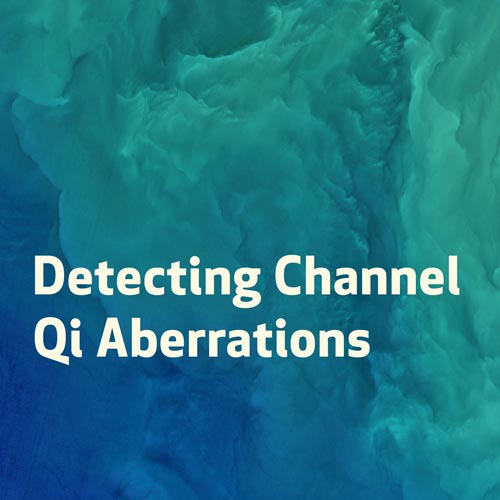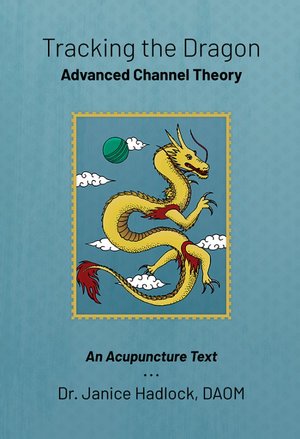Introduction From Tracking the Dragon
This is an excerpt from Janice Walton-Hadlock's book "Tracking the Dragon."
Originally, this book was written as a class text for students of Asian medicine who had already completed at least one year of study. Knowledge of the channel locations, acupoint locations, and basic terminology, including at least one system of “pattern” diagnosis, was assumed.
Since then, some beginning students and even readers with no background in Asian medicine have expressed gratitude for the explanations and demystifications in this book –but they have requested the inclusion of some basic, starter information.
Now, with the addition of point location/channel Qi maps at the back of the book and some acupuncture theory basics, and beginner can get up and running: feeling channel Qi by hand, using the findings to make diagnoses.
“Pattern diagnosis” refers to the Asian tradition of combining information from a patient’s pulse, tongue, and other physical presentations, plus a patient’s symptoms, into one of the official patterns. Various systems, or “schools” of pattern diagnosis abound; the systems include Eight parameters, Six Levels, Five Elements, and Zhang-Fu, to name just a few. Each system uses its own collection of patterns. Many practitioners use patterns from several schools.
Once a practitioner has settled on the official pattern that best describes the patient’s condition, he then uses the appropriate acupuncture, moxa, massage, lasers, magnets, or herbal treatment that is recommended for all people with that pattern.
But whether the practitioner is using acupuncture needles, moxa, herbs, Tui Na, or Medical Qi Gong to treat the pattern, and whether the pattern is expressed in terms of “hot and cold,” “Yin and Yang,” “Wood Attacking Earth,” or “Jue Yin level Fire,” the underlying goal is always the same: restoration of channel Qi to its correct flow.
A very brief definition of channel Qi
As westerners, we first learn in high school physics that moving electrical currents create electromagnetic fields and electromagnetic waves. As a corollary, we learn the reverse is also possible: waves can create currents. The sequence in which we are taught these ideas influences our thoughts regarding matter and waves. We tend to look at tangibles, and consider their invisible, inherent wave properties to be side effects. This thinking is backwards.
To understand the ancient thinking behind Asian medicine, and to understand modern physics, wemust reverse the preferred sequence of these ideas: we must think first, that waves can create currents; then, energy in currents can transform back into waves.
The ancient theories hold that, at the moment of initiation of the universe, what we now call the “Big Bang,” all creation was purely vibratory, purely waves. Some waves condensed into matter. More exactly, the energy in waves transformed into the energy in currents. Or we might say, the energy in those waves condensed into energy formats that manifest as moving electrical units and other quantum bits. This charged movement constitutes currents. More simply, “waves can make currents.”
This idea matches perfectly with our modern “string theory” of physics, which holds that all materially existing subatomic components (quantum particles) are made up of tightly coiled bits of vibrations. All matter is derived from vibrations, or waves. When matter dematerializes, it shifts back into a state of pure vibration.
As westerners, we tend to think that the chemistry in living systems creates any electrical currents that might be detected coursing over the surface of the cells, or streaming along the connective tissue. These currents, in turn, might be “giving off” waves. To understand Asian medicine, we must think more correctly: waves are forming the currents. The currents, in turn, create, sustain, and guide the cellular chemistry. The chemical behavior, in turn, creates further waves.
We cannot feel, by hand, the specific electromagnetic movement patterns (waves and electrical currents) that define and create each of the types of atoms. We cannot feel, by hand, the larger currents that flow in highly specific patterns over each cell’s surface, directing the inner-cellular chemical processes. But in large organisms, we can feel, by hand, the highly specific routes of the relatively huge currents formed by the billions of iterations of extra-cellular currents, currents that flow near the external surface of the organism. We call these routes The Channels.
For the most part, when we speak of the channel Qi that is found in all living systems, the energy that allows living systems to seemingly defy entropy and remain stable in the face of environmental changes, we are speaking about the moving currents that direct all biological processes. But to better appreciate channel Qi, we must also think of it as the waves that create those currents and the currents. To even more accurately describe channel Qi, we can say that it is made up of currents and the waves of thoughts and emotion that create and drive the currents and the waves given off by the chemical structures that are derived from and which stabilize those currents.
And to be still more accurate, channel Qi is one more thing: channel Qi is not only waves and material currents derived from the waves, it is the energy absorbed or released in the transition from wave energy to matter (electrons), and back again.
The locations at which wave energy converts to matter –or the reverse, where matter converts back to wave energy –are known in ancient Chinese philosophy as pivot points. These are the places where energy pivots back and forth between vibrational energy and formed components of matter (electrons and other subatomic bits) at any given point in time.
According to ancient Asian physics, creation, in order to appear real, needed three parts: wave(known in Sanskrit as Om, or in Chinese as Da[Great] Om, also pronounced Tao), matter(Anu,often translated as “atom”), and the location(Desa) of the transition between wave and matter at any given point in time (Kala).
In Chinese theory, the vibrational, or wave, basis for a thing’s existence, or you might say the idea of a thing’s physical existence, is referred to as its “Heavenly,” or Yang (closer to God, closer to the origin) aspect. The quantum bits that create the seemingly “real,” or “material” version of that idea are referred to as that creation’s “Earthly,” or Yin (further from God, further from the origin) aspect. The Pivots, the sum of the locations at which, at any given instant in time, wave energy transitions into matter, or “pivots” back into pure vibration, is the third part of the system.
As an aside, “The Dragon joins Heaven and Earth” is a not uncommon expression in Chinese. The expression has many applications, including the idea that man’s physical body resides somewhere between the skyey Empyrean and the soil of planet Earth. (This is sometimes rephrased as “Man stands between Heaven and Earth.)
Another common application interprets Heaven as man’s soul, Earth as man’s body, and the Dragon as the dynamic that, for the short span of a man’s life, binds the two.
The application of the Heaven/Dragon/Earth metaphor to the three parts of channel Qi –electrical waves, electrons (and related “formed” matter of quantum physics), and the transitional Pivots that exist “between” them –is particularly apt –and may very likely be the metaphor’s historical foundation.
Given this understanding, the sum of the pivot points in living systems, pivots that occur between the waves of “Heaven” and the chemical basis of “Earth,” the sum of which is known as the flow of Channel Qi, can metaphorically be referred to as The Dragon. I believe this may be the original understanding of the Heaven/Dragon/Earth expression.
If our eyes beheld truth, we would see that matter is constantly flashing in and out of existence at a nearly infinite number of locations, at the interface with the intangible surface that, in western science, has recently been named “the ether.” Throughout the universe, the transition points between waves and matter, the individual pivots, are locationally determined by the same Consciousness that created Vibrations in the first place. The sum of the locations of the individual pivots over any specific period of time(anything from nano seconds to eons) provides the basis for the seeming movement of all electrical currents during that time span. Given the popular use of the Chinese expression, “The Dragon joins Heaven and Earth,” the name for this third aspect of creation –the movement in currents, the phenomenon that lies between wave and matter over time is the movement of the Dragon.
In large living systems, such as humans, this movement aspect of the Dragon can be felt, as it travels in its highly specific pathways, near the surface of the organism. What we call channel Qi are the areas in living systems where the movement aspect of current is in a feel-able, detectable format.
Again, in an orgainism, its pure vibrations (what a Westerner might call the Platonic Ideal) are referred to as Heaven. Its formed, seemingly “real” matter, ranging from electrons and subatomic particles to the chunky protons, is referred to as Earth. The seeming movement of the electron portion of the Earth aspect, created by transitions between wave and matter, or you might say “the flow of The (collective) Pivots,” “the currents,” or the Dragon, is the channel Qi. If the organism is large enough, its currents of channel Qi are so large that we can feel them.
The vibrations that bring forth the universe are created by Consciousness. The transitions from wave to matter and back again, and the movements of currents thus created, are directed by Consciousness.
The flow of a human’s channel Qi is directed and influenced by a combination of Consciousness, the human’s consciousness, the matter-based molecules in his body such as DNA, and his highly specific original vibrations, or fractal waves, the fractal waves that define each human being. These extremely subtle “defining” wave patterns, patterns unique to each individual, exist before conception, and continue to exist after death. These individual wave patterns, or vibrations, are all subsets of the Universal vibration, from which all formed parts (material existence) of the universe are derived.
Western science is just beginning to propose the relationship between vibrational-, or wave-, physics and humans. In The Elegant Universe, by Brian Greene, the author proposes: “humans are, in fact, 3-D holographic projections of two-dimensional [wave] data.” In other words, the waves come first. Matter is an illusory derivative.
This is not a new concept. Twenty six hundred years ago, the philosophers of ancient India were writing and teaching these concepts in universities at Nalanda and Taxila. Traveling scholars from around the world were welcomed. Many famous Chinese scholars carried these ideas back to their homeland, where they contributed to the thriving philosophical debates of the Hundred Schools period of Chinese history, a period that preceded the violent, 221 BC “unification” of China.
Where is the channel Qi?
In living systems, currents of channel Qi bathe the surface of every cell. From the moment of conception, a specific pattern of electrical flow over the outside of the cell wall directs all cellular activity, including DNA expression. The specific pattern of this extracellular channel Qi flow is directed primarily by the wave-based Idea of the organism, and secondarily by the electromagnetic influence of the DNA molecule and other structures within the organism.
So long as the channel Qi of a cell is flowing over the surface of the cell in its correct pattern, that cell is alive. In any living cell, or any living system, it is the invisible wave energy and the wave’s directing of the movement of the organism’s channel Qi that allows the cell, or the living system, to exist in seeming defiance of entropy.
When the channel Qi ceases to be influenced by the Idea-wave patterns (Divine Consciousness), and merely flows mechanically, in the pattern defined by proximity to its cellular chemistry or the surrounding chemistry, the cell is dead. Its chemical structure may still exist, but the organism is dead, and its structure is subject to entropy.
As the cells of a multi-celled organism increase from their original single cell, the channel Qi patterns continue to flow in highly specific patterns over the cell walls, electromagnetically directing every process that occurs within the cells. As the growing cell cluster increases in size, alterations in the surface-to-volume ratio of the organism and other alterations due to changes in mass and shape cause derivative variations in the fractal flow patterns of the organism’s channel Qi. These localized variations in the flow of channel Qi, in turn, trigger localized alterations in DNA expression. These alterations allow various cells to assume different roles.
In multi-celled organisms, in addition to the streams of current that run over the surface of each cell, the compoundings of the original fractal, or “Mother,” pattern of channel Qi also flow over the exterior of the entire organism.
Even when an organism vastly increases in size, iterations of the currents that direct individual cells continue to influence and maintain the currents that traverse the exterior of the organism. These exterior currents can become huge –in humans, these currents are large enough to be detected by hand. These currents that flow over the exterior of the organism (or, more accurately, just under the skin), serve to both reflect and direct the individual, cellular currents.
As stated before, in Asian medicine, we refer to these large, exterior (just under the skin) rivers of current as The Channels. The flow patterns of human channels are highly standardized: the mathematical formula (a non-linear equation) theoretically (according to modern physics’ Chaos theory) derivable from the fractal that underlies the highly specific flow patterns seen in humans might even be considered a definition for the structural design of an embodied human.
In large organisms, the channel Qi flow patterns in the exterior channels influence the channel Qi flow patterns at the cellular level. The cellular channel Qi flow patterns help maintain the external channel Qi flow patterns. These mutual influences provide stability to the organism. An organism’s body can be influenced by external events such as weather, food, physical impact, and so on, via changes in the large rivers of channel Qi that occur from exposure to these events. These changes are then transmitted to the smaller streams and rivulets of channel Qi, and then to the channel Qi that traverses each cell. These changes in cell-level channel Qi flow then exert a changed influence over cellular chemistries and structures.
At the same time, the large rivers of channel Qi are kept stable in spite of external influences, by virtue of the billions of cellular contributions of channel Qi wave signals: iterations that are held in place fairly well by virtue of the highly stable molecules of DNA and other cellular structures.
From jellyfish to great blue whales, this external-internal communication occurs between rivers of currents large and small, that is to say, the large currents of channel Qi in the close-to-the-surface channels and the small currents that bathe each cell. The effect of these mutually resonant currents on cellular chemistry and functions and the effects of external influences on the currents and the stabilizing effect that cellular chemistry has on the channel Qi –all working together –are the basis for homeostasis.
Homeostasis is an organism’s ability to respond to externals, while maintaining a high degree of structural and electrical constancy despite external fluctuations. We tend to think that homeostasis refers to the stability of the body’s chemistry. In fact, homeostasis is the underlying-stability-amidst-change that occurs in the body’s waves and currents and chemistry. Ultimately, the thing that does not change easily, the anchor that keeps the organism alive despite changes in the environs, is the underlying, unchanging wave idea behind the creation of the organism.
Errors in the flow of channel Qi
The underlying cause of all human health problems is a disruption, or glitch, in the flow of the channel Qi. Errors in the rivers of channel Qi can be brought about by external influences such as injury, illness, extremes of weather, toxins, and so on. Errors in channel Qi can also be brought about by what Chinese medicine refers to as“internal influences”: thought waves created by (self-generated) emotionalism (the Seven Pernicious, or negative, Emotions). Whatever the cause, errors in the rivers of channel Qi flow will immediately cause erroneous signals in the electrical instructions that flow to every cell in the body. These errors may result in wrong DNA expression and the subsequent malfunctions of cells and organs, and can even influence the mental state.
Treating the errors
The larger, coalesced, “external” streams and rivers of current lie close to the surface of the organism, and can therefore be easily manipulated using metal needles, magnets, lasers, Qi Gong (mental discipline of the currents), and so on.
All forms of Asian medicine are based, ultimately, on correcting glitches that develop in the flow of the large rivers of channel Qi. We use our methods of medicine to restore the large rivers of channel Qi flow to the “standard patterns” for humans: the patterns that are most perfectly aligned with the original wave patterns that define the Idea of “Human.”
By restoring or maintaining the correct flow patterns of the largest rivers, the smaller bifurcated streams of channel Qi and the tiny, cellular streams of channel Qi are also restored to or maintained in the manner of current flow that reflects those specific waves that define us as healthy humans.
Resurrecting the art of working with channel Qi
During the most recent dark ages, which spanned the years from approximately 650 BC to 1750 AD, actual knowledge of a person’s channel Qi flow was considered to be unknowable except to the great intuitive masters of medicine. These masters were able to discern the exact locations of any channel Qi disruptions. They could rectify these glitches by manipulating channel Qi at the exact point at which it was going astray. They had no need whatsoever of formulaic “patterns” to suggest treatments that possibly might be useful.
As for the non-masters, during these dark times, even if a less-than-intuitive doctor could detect the movement of channel Qi, the comprehension and analytical skills required for assessment and correction of any disruptions were not available to most people. Hence the development of formulaic, cookbook-style collections of one-size-fits-all treatments, based on the various schools of pattern diagnosis: everyone with a certain pattern should be treated the same way. The earliest of these patterns were codified in the Chinese medical classic, the Nei Jing.
The Nei Jing
The preeminent gospel of Chinese medicine is Huang Ti Nei Jing (Golden Emperor’s Classic of Medicine),a tome comprised of two parts: Su Wen (Simple Questions) and Ling Shu (Divine Pivot).
More commonly referred to simply as “the Nei Jing,” the long-revered classic was compiled during the dark ages(recent research suggests a compilation date of approximately 240 AD –approximately five hundred years after the unification of China). All subsequent traditional Chinese medical research has used the Nei Jingas its foundation material. When one refers to “the classics” of Chinese medicine, one is referring to the Nei Jing, unless other specific books are mentioned.
At the time the Nei Jing was compiled, much of the Chinese understanding of what we now call quantum theory and string theory, which is to say, the understanding of the physics of channel Qi, had already been lost.
The assemblers of the Nei Jing threw together all manner of profound spiritual aphorisms, residual concepts of the medicine of higher age, the new, dark-ages pattern diagnostics, some budding medical superstitions, and misunderstandings inherent in a darkening era. They tied this mishmash together with sharp, thinly veiled criticisms of the long-dead, self-proclaimed “Golden” Emperor.
The first part of the Nei Jing is written in dialogue format, with the “Golden” Emperor who unified China in 221 BC asking questions, and the legendary medical sage Chi Bo answering.
If one understands the spiritual points being made in the Nei Jing, the book can be read as both a medical book, a spiritual guide, and a criticism of those who lack spiritual understanding, including the Emperor. In the Nei Jing, this Golden Emperor, who in real life had been a military despot who, for political reasons, had the scholars and philosophers buried alive in mass graves, is delightfully portrayed as an ignoramus, asking about, but unable to comprehend, the medical and spiritual knowledge of the wise doctor/philosopher who patiently answers his questions in phrases that simultaneously convey spiritual truisms with barbed criticisms of the Emperor.
However, for many centuries, the Nei Jing has been taken –by many of its readers –as a straightforward medical treatise: the spiritual aphorisms are completely ignored; the Emperor’s dull-witted “contributions” to the dialogue are assumed to be intelligent and appropriate. Possibly because of the dialogue format, and unable to appreciate the odd bits of irony and even sarcasm, many scholars of the dark ages assumed that the book had been written by the Emperor himself. Even today, the book is often attributed to the Golden Emperor –a military dictator with no background in medicine.
Despite this somewhat common and enduring misapprehension, scholarly works, those of today and those dating back at least as far as the eleventh and twelfth century (works of philosopher/historians Cheng Hao and Zu Xi, respectively), provide firm evidence that the Nei Jing is a compilation assembled hundreds of years after the Emperor’s death.
Today
We have long since emerged from the most recent dark age, the age in which the Nei Jing was compiled. Today, most would-be medical practitioners not only can feel channel Qi and any channel Qi disruptions, they have the intelligence to figure out how to exactly correct the specific disruptions in a person’s channel Qi flow.
However, “official” recognition of the art of working directly with channel Qi has been squirming around uncomfortably for over a century. In an effort to appear “scientific,” many modern individuals, and even the 20th-century Chinese government, have dismissed the very idea of channel Qi, deeming it on par with the many other weird medical superstitions that developed during the most recent dark age.
Channel Qi is not one of the weird superstitions. It is the underlying basis of Asian medicine. Its use in medicine historically precedes the use of any and all of the pattern systems. The many diagnostic “patterns” of Asian medicine are simplifications created on behalf of people who could not feel channel Qi or understand the implications of incorrect channel Qi flow.
The various schools of pattern diagnoses were created during the dark ages. The patterns were an attempt to give generalized recipes and mnemonic devices to medical practitioners who would be “working in the dark.”
The time has come to resurrect a science of medicine that uses easily accessible, feel-able currents to modify and correct the billions of cellular currents that go awry during poor health, sickness, and pain.
This book provides simple instructions that allow any student of Asian medicine to build upon the generalities of pattern diagnoses by adding the highly specific knowledge yielded by detecting the actual flow of channel Qi in a patient: by tracking the patient’s dragon.
The practitioner of this medicine will be more successful if he combines his present-day, Asian medicine pattern theory training –which provides a wonderful vocabulary, and which remains indispensable if one is working with herbs –with the ancient, higher-age approach to medicine: directly detecting the flow of channel Qi, and performing treatments based on the idea of rectifying any errors in that flow.
As channel Qi glitches are repaired, the errors in the seemingly real, “physical,” components of the body, components made up of condensed wave energy that resonates with the channel Qi wave energy, are also rectified.
The stunning, almost instantaneous, body-wide, physiological changes that can occur in response to correctly performed treatments of Asian medicine occur in response to rectifications of incorrectly flowing channel Qi. Oppositely, treatments that do not restore channel Qi to its correct flow do little, if any, good.
Merely adhering to generalities of pattern diagnosis gives a health practitioner a hit-or-miss chance at correcting the aberrant flow of channel Qi. That’s no longer good enough. The dark ages have ended. We can, once again, provide medical treatments that directly correct irregularities in channel Qi: corrections that then resonate with and correct the body's structure and chemistry.
In order to do this, we must be able to detect errors in the flow of channel Qi. Only by knowing exactly what the channel Qi is doing and where it is flowing, by tracking the dragon and thus detecting errors in its movement, is a health practitioner likely to obtain remarkable results with any degree of consistency.
A higher age has dawned. It is time, once again, to practice medicine based on the movement of energy: based on making straight the way for the Dragon that joins Heaven and Earth.
“It is by virtue of the twelve channels that human life exists, that disease arises, that human beings can be treated and illness cured. The twelve channels are where beginners start and masters end. To beginners, it seems easy; the masters know how difficult it is.”
Other Courses By This Teacher
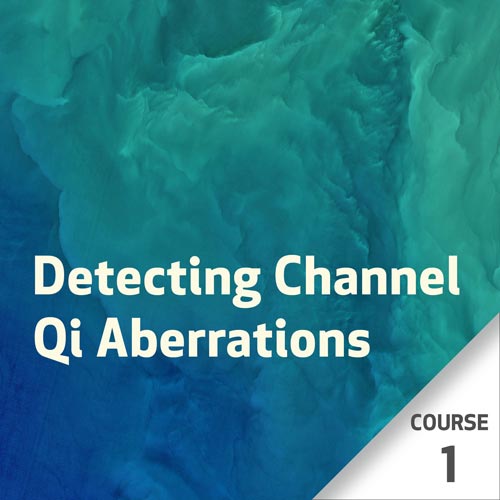
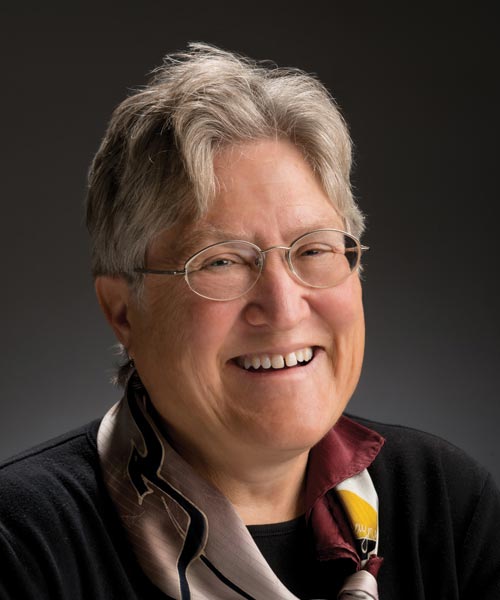
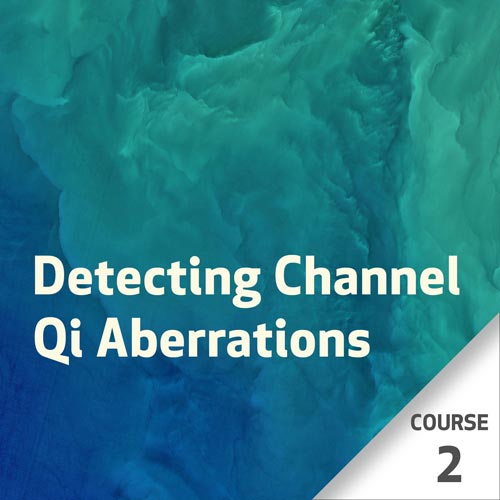

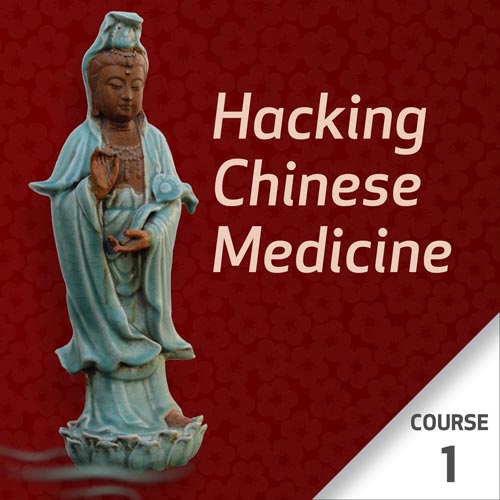

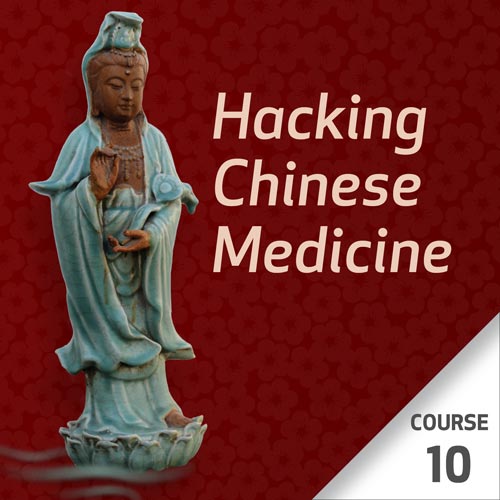

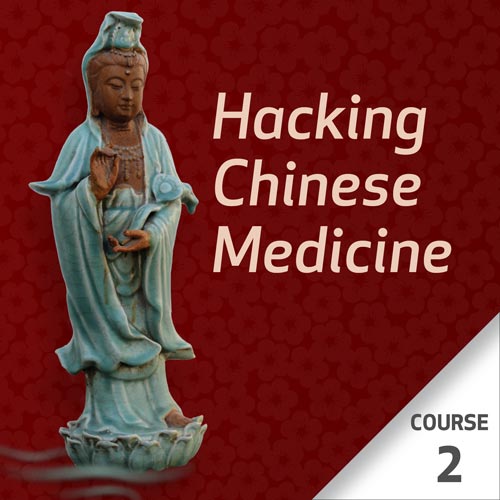

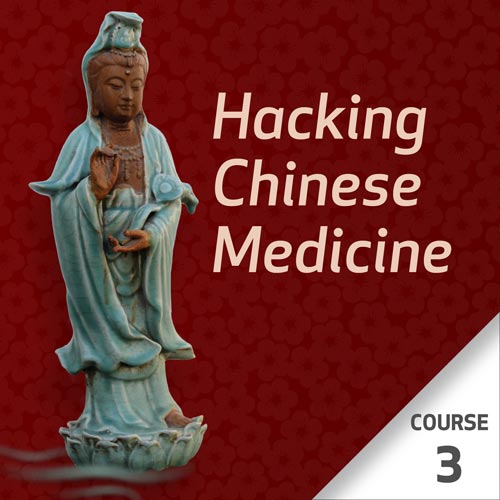

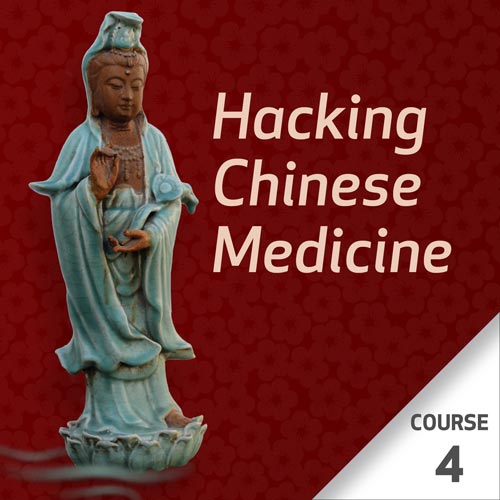

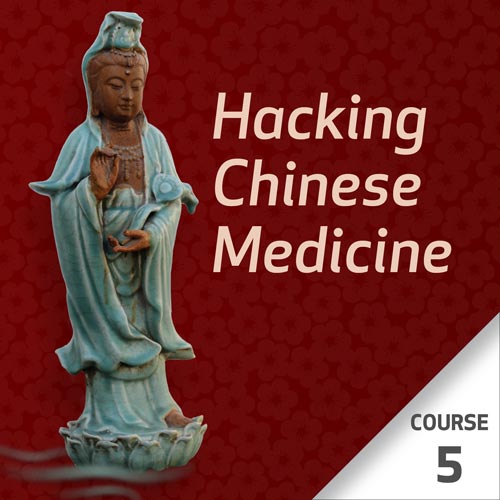

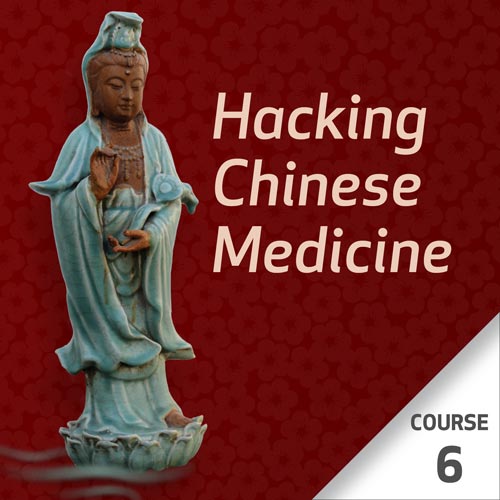

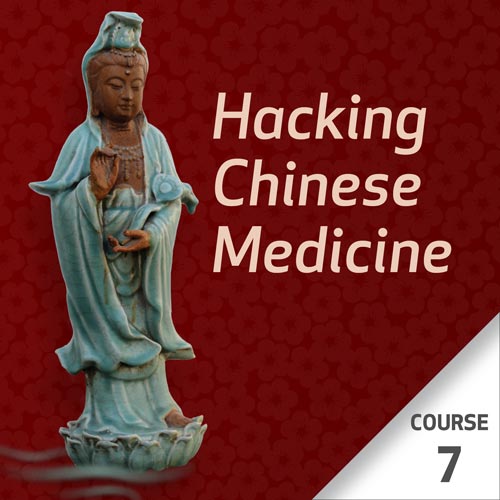

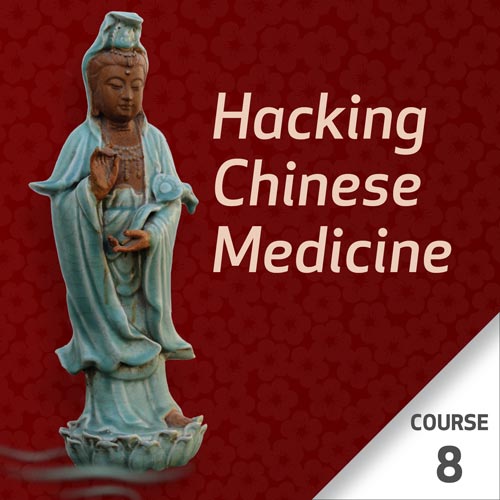

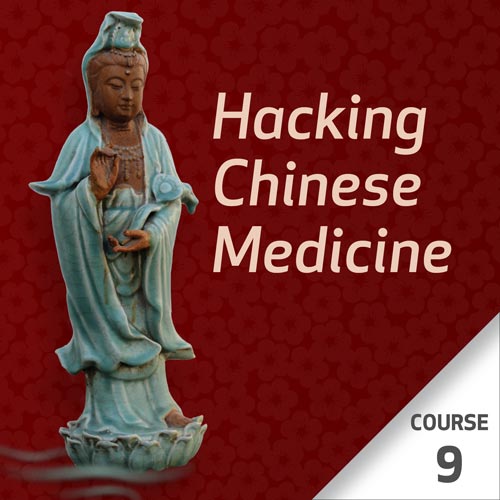

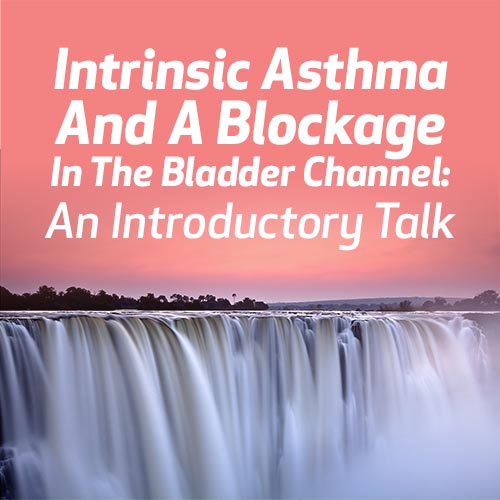

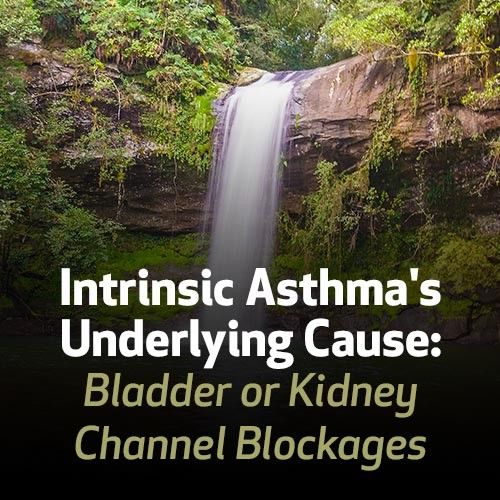

Overview
You can know exactly where to place acupuncture needles, and why.
Learn to detect, with your hands, the exact location of Channel Qi aberrations - the root of all mental and physical illness. Then discover specific styles of needle insertion that directly restore correct Channel flow at the point of the aberration – as opposed to hit-or-miss, hope-for-the-best treatments. Channel Qi aberrations, classically referred to as “Channel Qi Doesn’t Go Through,” are the energetic drivers behind all health problems.
Channel Qi blockages occur in highly specific, individualized locations – and you can detect these with your hands. These blockages force the Channel Qi into aberrant patterns, which then lead to compromised health. Stubborn physical or emotional blockages are only rarely diminished by distal-point or “indicated point” treatments. But when you breach these Channel Qi obstructions by strategic needling in the exact vicinity of the blockage, instantaneous healing often ensues.
You already have an innate ability to detect Channel Qi. Develop it.
Please note: It is highly recommended you complete at least one of these prerequisite items prior to completing this course: Watch a 1-hour recording of Janice's Advanced Channel Theory presentation and/or read the first 4 chapters of Tracking the Dragon, by Janice Walton-Hadlock. Registrants of this course should also try feeling Channel Qi prior to the course so that they have a sense of their ability.
Learning Objectives
- Anyone can learn to detect channel Qi, but it requires practice to understand what one is feeling. The demonstrations in this class will be directed at increasing confidence in recognizing the Channel Qi sensations experienced by the hands, and learning what the different sensations signify.
- To come away with a clear sense of how to feel Channel Qi and how to develop and test a treatment plan based on the aberrations in Channel Qi; learning confidence in one's ability to assess is also a key goal in this course, and this is best achieved through practicing.
- Learn to differentiate, using hand-detection, when Channel Qi is running correctly, backwards, or stopping.
- Learn to differentiate between the normal and healthy patterns of Channel Qi flow when a person is in parasympathetic, sympathetic, sleep, or dissociated (shock) mode.
- Learn needle insertion techniques that directly rectify Channel Qi aberrations.
Your Teacher

Janice Walton-Hadlock
Janice Walton-Hadlock, DAOM, L.Ac., is a professor at Five Branches University, and specializes in Channel Theory, Yin Tui Na, Psychology and Counseling; she is the founder of the Parkinson's Recovery Project, and is an author on topics relating to Channel Theory and Parkinson's.
Categories
Tags
Overview
“First inspect the channels, separating and following...then adjust them accordingly” – Su Wen
In this Level Two class, you will fine-tune the skills you learned in Level One, where you learned to follow the Channel Qi: Here you will learn to separate them, distinguishing between the various types of channel Qi.
Liver channel Qi gives off a very different signal than Spleen channel Qi. Kidney Channel Qi feels different from the Liver or the Spleen. Once you have even a mild sense for “following” the Channel Qi, you can quickly learn to tell the channels apart!
You'll learn to trust yourself when you feel unusual channel behaviors – such as Du Channel Qi responding to a blockage by floating up out of the body and into thin air – and understand why the patient with this pattern has profound deficiency symptoms that don’t respond to the usual tonics or stimulation.
Please note that Detecting Channel Qi Aberrations - Course 1, Level 1 is a prerequisite to this course.
Learning Objectives
- Differentiate between the sensations given off by the various channels, particularly the three Yin Leg channels.
- Learn to recognize patterns where a blockage on one side of the body (left/right) causes stimulation or trauma occurring on one side of the body and manifests as pain on the opposite side, sometimes in an “illogical” location.
- Learn how to coach patients in the use of acupuncture and/or Qi Gong to rectify channel attacking patterns in the three Yin Leg channels.
- Tangibly experience Du or Ren channel Qi aberrations in which channel Qi exits the body in response to a channel blockage, and learn how to treat them with acupuncture and/or Qi Gong.
Your Teacher

Janice Walton-Hadlock
Janice Walton-Hadlock, DAOM, L.Ac., is a professor at Five Branches University, and specializes in Channel Theory, Yin Tui Na, Psychology and Counseling; she is the founder of the Parkinson's Recovery Project, and is an author on topics relating to Channel Theory and Parkinson's.
Categories
Tags
Overview
Your key to unlocking the secret codes of Chinese medicine.
A very literate Chinese speaker has no more idea what is meant by “Lung Phlegm in the Liver” than does the average English speaker. For that matter, the word “wiry” and the concept of “Spleen pulse” don’t mean anything to the average Chinese speaker.
The words we use in Chinese medicine are not words, per se. They are code. “Liver,” as you well know, does not mean liver. For that matter, “Yin,” in the context of medicine, does not mean Yin. Damp certainly does not mean Damp. And Spleen Yang is present in the smallest, single-celled organism – an organism that does not have a spleen.
Your patient might tell to you, “I know all about Yin and Yang. The moon is Yin, males are Yang…” But these Taoist meanings have almost nothing to do with the way these words are used in the Chinese medicine code.
What does Yin and Yang mean to a Korean musician? To a traditional Taoist? To a Feng Shui practitioner? And all these different meanings are different still from what Yin and Yang mean to a TCM practitioner!
If you understand the way these code words work in TCM, and what they actually mean in plain English – which is not what you think – the whole world of Chinese diagnostics will suddenly make a whole lot of sense. It will even become something you can explain to your patient, using simple, obvious English.
Just knowing how the vocabulary actually works, something I never learned in my years of school, has made all the difference in my practice. I understand what I am doing. I am no longer just blindly following the dots.
This first class covers material in the first three chapters of Hacking Chinese medicine, and will introduce you to some of the more common usages of the “secret codes of Chinese medicine."
Learning Objectives
- Adding depth to an English-speaking practitioner’s understanding of the vocabulary and phraseology of Chinese medicine.
- Introducing the implications of channel theory from an electromagnetic, 21st century perspective.
- Explaining cryptic aphorisms, mistranslations, and the error accumulations of centuries.
Your Teacher

Janice Walton-Hadlock
Janice Walton-Hadlock, DAOM, L.Ac., is a professor at Five Branches University, and specializes in Channel Theory, Yin Tui Na, Psychology and Counseling; she is the founder of the Parkinson's Recovery Project, and is an author on topics relating to Channel Theory and Parkinson's.
Categories
Tags
Overview
This course will cover concepts about Channel Qi and outline the importance of Qi direction in making an accurate diagnosis. Feeling Channel Qi is easy. Although many practitioners feel it is difficult, the instructor will review how it can be acquired in practice. In detail, the theory of how to use and diagnose Channel Qi including the proper use of hands will be shared. Different concepts involving currents and the sensations given off by the Channel Qi will also be outlined.
The words that students have used to describe the sensations given off by the Channel Qi will be included.
Learning Objectives
- Depth will be added to an English-speaking practitioner's understanding of the vocabulary and phraseology of Chinese Medicine.
- The student will have a better understanding of the implications of Channel Theory from an electromagnetic, 21st-century perspective.
- The student will learn about cryptic aphorisms, mistranslations, and various error accumulations that have spanned over centuries.
Your Teacher

Janice Walton-Hadlock
Janice Walton-Hadlock, DAOM, L.Ac., is a professor at Five Branches University, and specializes in Channel Theory, Yin Tui Na, Psychology and Counseling; she is the founder of the Parkinson's Recovery Project, and is an author on topics relating to Channel Theory and Parkinson's.
Categories
Tags
Hacking Chinese Medicine - Course 2
Qi: The Most Important Code Word in Chinese Medicine
with Janice Walton-Hadlock
See In StoreOverview
Qi is a code word. It can take years for a student of Chinese medicine to begin to understand all the variations and permutations implied by the word “Qi”.
Even so, many practitioners of Chinese medicine fling this word at their patients. The imprecise and even incorrect use of the word “Qi” can lead to grave concerns on the part of patients who go home frightened by their “Qi deficiency” or puzzled about their “Stagnant Qi.”
By learning the ancient roots of this word, by reviewing the derivative forms of this word (Gu Qi, Zhong Qi, and so on), a practitioner can be reminded of ways to communicate with his patient in a manner that isn’t mystical or alarming.
By putting key Chinese medical words into English – and by knowing the historical origins of these words and understanding what they actually meant historically as well as in light of western understanding of physics – a practitioner can come up with far more helpful treatment plans, and also empower his patient.
Learning Objectives
- Consider the patient empowerment that comes with actually understanding with the acupuncturist is saying.
- Learn how to translate the various type of medical Qi into simple English that a patient or western MD can easily relate to.
- Receive examples of how using the Chinese medical terms with patients can lead to confusion and even fear on the part of the patient.
- Learn the ancient roots of the word Qi, and some of the ancient philosophy behind it.
Your Teacher

Janice Walton-Hadlock
Janice Walton-Hadlock, DAOM, L.Ac., is a professor at Five Branches University, and specializes in Channel Theory, Yin Tui Na, Psychology and Counseling; she is the founder of the Parkinson's Recovery Project, and is an author on topics relating to Channel Theory and Parkinson's.
Categories
Tags
Hacking Chinese Medicine - Course 3
A New Look at the Axioms of Chinese Medicine
with Janice Walton-Hadlock
See In StoreOverview
When’s the last time you were helped by the carefully memorized statement: “The Lungs go up and out?”
This class explains how, in our modern times, the words “Channel Qi” have been intentionally omitted, rendering many of our lessons senseless.
For example, most of the aphorisms and axioms that we learn in school refer vaguely to “Qi” or specific organs. These axioms are so vague as to be meaningless in many cases.
By re-inserting the words “Channel Qi” into these “rules” of TCM, we can see how these axioms are helpful and provide constant reminders that we are supposed to be aware of the flow patterns of our patients’ channel Qi, using that information diagnostically and in guiding our treatment choices.
Learning Objectives
- The student will have a better understanding of the implications of Channel Theory from an electromagnetic, 21st century perspective.
- The student will learn about cryptic aphorisms, mistranslations, and various error accumulations that have spanned over centuries.
- Depth will be added to an English-speaking practitioner's understanding of the vocabulary and phraseology of Chinese Medicine.
Your Teacher

Janice Walton-Hadlock
Janice Walton-Hadlock, DAOM, L.Ac., is a professor at Five Branches University, and specializes in Channel Theory, Yin Tui Na, Psychology and Counseling; she is the founder of the Parkinson's Recovery Project, and is an author on topics relating to Channel Theory and Parkinson's.
Categories
Tags
Hacking Chinese Medicine - Course 4
Causation & Indications: Poor Syntax
with Janice Walton-Hadlock
See In StoreOverview
We are often taught that a symptom is “caused by” some Chinese medical term. Very often, the medical term is simply a translation of the symptom onto Chinese medical code. Knowing this can help both doctor and patient and prevent much confusion.
Likewise, books that say “This acupoint ‘treats’ a given problem” or is “indicated” for a given problem, as if all symptoms have the same origin, completely miss the point of how acupuncture works and why each person’s symptoms might have a somewhat different origin, requiring individual-specific treatment. When you get past this sort of point prescription magical thinking and understand what the point indications really mean, you’ll be ready to learn how to choose acupoints that will give brilliant results.
Learning Objectives
- The student will learn about cryptic aphorisms, mistranslations, and various error accumulations that have spanned over centuries.
- Depth will be added to an English-speaking practitioner's understanding of the vocabulary and phraseology of Chinese Medicine.
- The student will have a better understanding of the implications of Channel Theory from an electromagnetic, 21st century perspective.
Your Teacher

Janice Walton-Hadlock
Janice Walton-Hadlock, DAOM, L.Ac., is a professor at Five Branches University, and specializes in Channel Theory, Yin Tui Na, Psychology and Counseling; she is the founder of the Parkinson's Recovery Project, and is an author on topics relating to Channel Theory and Parkinson's.
Categories
Tags
Hacking Chinese Medicine - Course 5
Changing Times, Changing Vocabulary
with Janice Walton-Hadlock
See In StoreOverview
In ancient times, Chinese medical terms were often words about the weather. They were used literally and metaphorically. Words like Damp, Wind, Heat, Cold, Sun, were often used to explain how someone’s illness came about through overexposure to some climatic situation. If a problem was not, in fact, due to the weather, the climate words were used anyway. In these cases, the words were metaphors and euphemisms. In these cases, they don’t actually help with our understanding of what’s going on. These words are great for putting together a pattern diagnosis and choosing a treatment out of the pattern-code box, but they often do not help us understand what’s really going wrong, they don’t help us know what’s happening with the channel Qi, and they very, very often do NOT lead us to effective treatment.
Today, very few of our patients are suffering from health problems associated with climatic excess. However, we still use the same old weather based words to codify the treatment patterns.
Very often, this makes our diagnoses and treatment names misleading, not useful, or even stupid and ludicrous.
This talk will explain how to work around the limitations and misunderstandings that come about through using these old terms, and suggesting some better ways to communicate with patients about the underlying causes of their problems.
Learning Objectives
- The student will learn about cryptic aphorisms, mistranslations, and various error accumulations that have spanned over centuries.
- Depth will be added to an English-speaking practitioner's understanding of the vocabulary and phraseology of Chinese Medicine.
- The student will have a better understanding of the implications of Channel Theory from an electromagnetic, 21st century perspective.
Your Teacher

Janice Walton-Hadlock
Janice Walton-Hadlock, DAOM, L.Ac., is a professor at Five Branches University, and specializes in Channel Theory, Yin Tui Na, Psychology and Counseling; she is the founder of the Parkinson's Recovery Project, and is an author on topics relating to Channel Theory and Parkinson's.
Categories
Tags
Hacking Chinese Medicine - Course 6
Mistranslations of the Chinese Code Words
with Janice Walton-Hadlock
See In StoreOverview
This class covers some code words that have been mistranslated into English. Our use of these words makes this medicine even more cryptic than it needs to be. Also, by using mistranslated words, we inhibit our ability to really understand what we are talking about when we use these words as if they made sense. Even worse, if we use these words with our patients, they are left with very wrong ideas about what is going on inside their bodies. If you use the correctly translated terms, not only is this medicine easy to explain, but your patients can be empowered by knowing what is going on in their own bodies. Oppositely, using mistranslated words makes our diagnoses and treatment names misleading, not useful, or even stupid and ludicrous. Also, most of the encoded Pattern names have left out the term “Channel Qi", which was always understood to be the underpinnings of this type of medicine.
This talk will give the correct translation for some of the most common terms, offering a better way to communicate with patients about the underlying causes of their problems.
Learning Objectives
- Depth will be added to an English-speaking practitioner's understanding of the vocabulary and phraseology of Chinese Medicine.
- The student will learn about cryptic aphorisms, mistranslations, and various error accumulations that have spanned over centuries.
- The student will have a better understanding of the implications of Channel Theory from an electromagnetic, 21st century perspective.
Your Teacher

Janice Walton-Hadlock
Janice Walton-Hadlock, DAOM, L.Ac., is a professor at Five Branches University, and specializes in Channel Theory, Yin Tui Na, Psychology and Counseling; she is the founder of the Parkinson's Recovery Project, and is an author on topics relating to Channel Theory and Parkinson's.
Categories
Tags
Hacking Chinese Medicine - Course 7
Balancing Yin and Yang - And an Introduction to Channel Theory
with Janice Walton-Hadlock
See In StoreOverview
If you are an English speaker, you may have a very incorrect idea of what is meant by the Chinese colloquial phrase “Balancing Yin and Yang.” Loosely translated, this phrase means anything from “let’s mix things up” to “let’s make things better.”
Then again, the phrase means something very different in classical Taoist Chinese, where it means the same as the ancient Greek idea of the same era: “balancing body and mind.” Which refers to lifestyle choices, and isn’t something that we can treat using medicine.
Learn more about this history of this concept and what it means for us in the field of Chinese medicine.
This lecture is the last of three that address common mistranslations from the Chinese into English.
After a discussion of Balancing Yin and Yang, the lecture makes a foray into a new field altogether: channel theory and it’s applications, starting with an example of treating asthma.
Learning Objectives
- Depth will be added to an English-speaking practitioner's understanding of the vocabulary and phraseology of Chinese Medicine.
- The student will have a better understanding of the implications of Channel Theory from an electromagnetic, 21st century perspective.
- The student will learn about cryptic aphorisms, mistranslations, and various error accumulations that have spanned over centuries.
Your Teacher

Janice Walton-Hadlock
Janice Walton-Hadlock, DAOM, L.Ac., is a professor at Five Branches University, and specializes in Channel Theory, Yin Tui Na, Psychology and Counseling; she is the founder of the Parkinson's Recovery Project, and is an author on topics relating to Channel Theory and Parkinson's.
Categories
Tags
Hacking Chinese Medicine - Course 8
Channel Theory Basics and a Case Study
with Janice Walton-Hadlock
See In StoreOverview
The course provides an introduction to some of the electromagnetic properties of fascia, and why western researchers are now suspecting that electrical flow in fascia corresponds with the “mysterious meridians of Chinese medicine.”
This course covers:
Conversion from one type of channel Qi to another, and the locations of these conversions; how channel Qi creates organs, and not the other way around;
how we can learn to feel the differences between one channel and another; how different types of channel Qi might be responsible for the development of the various sensory brain cells;
The importance of always bearing in mind the sequence of the channel Qi flow when diagnosing a health problem.
The case study demonstrates using channel theory to track down the very unexpected, multiple, channel blockages causing the patient to have thirty years of chronic migraines, weakness on one side of her body, and why her knee, ankle, neck, and 6th rib on her right side were always “popping out of place.” None of the traditional Pattern diagnoses helped her condition - tongue and pulse showed weakness, but didn’t help show what the problem actually was; this course will illuminate the processes used to solve the issue.
Learning Objectives
- The student will learn about cryptic aphorisms, mistranslations, and various error accumulations that have spanned over centuries.
- Depth will be added to an English-speaking practitioner's understanding of the vocabulary and phraseology of Chinese Medicine.
- The student will have a better understanding of the implications of Channel Theory from an electromagnetic, 21st-century perspective.
Your Teacher

Janice Walton-Hadlock
Janice Walton-Hadlock, DAOM, L.Ac., is a professor at Five Branches University, and specializes in Channel Theory, Yin Tui Na, Psychology and Counseling; she is the founder of the Parkinson's Recovery Project, and is an author on topics relating to Channel Theory and Parkinson's.
Categories
Tags
Hacking Chinese Medicine - Course 9
Classic Theory: When It Doesn't Work
with Janice Walton-Hadlock
See In StoreOverview
Some classic theory doesn't actually work. In school, we are taught this theory as if it works, but it never has and never will; an example of this is, 'Ear ringing is Kidney Yin Deficiency.' Treatments that Tonify Kidney Yin do not get rid of ear ringing.
This course discusses why false theory is kept in the canon (hint: tradition) and also how to successfully treat some of the problems for which we've learned false theory.
The opposite law is also true. We learn in school that certain health problems are incurable. Usually, this is because western medicine has deemed them incurable or because the false theory never works. In the presentation, examples are shared of 'incurable' problems that are actually quite easy to treat.
Learning Objectives
- The student will have a better understanding of the implications of Channel Theory from an electromagnetic, 21st-century perspective.
- The student will learn about cryptic aphorisms, mistranslations, and various error accumulations that have spanned over centuries.
- Depth will be added to an English-speaking practitioner's understanding of the vocabulary and phraseology of Chinese Medicine.
Your Teacher

Janice Walton-Hadlock
Janice Walton-Hadlock, DAOM, L.Ac., is a professor at Five Branches University, and specializes in Channel Theory, Yin Tui Na, Psychology and Counseling; she is the founder of the Parkinson's Recovery Project, and is an author on topics relating to Channel Theory and Parkinson's.
Categories
Tags
Intrinsic Asthma and a Blockage in the Bladder Channel: An Introductory Talk
Intrinsic (exercise-induced) asthma is curable. The Nei Jing reveals the cause.
with Janice Walton-Hadlock
See In StoreOverview
Intrinsic (non-allergy) asthma is well-treated using Chinese Medicine. By holding your hand over the channels and sensing the channel aberrations in the Bladder and/or Kidney channels, you can know the location of the crucial blockage(s).
This course explains the underlying cause and the treatment of intrinsic asthma, aka exercise-induced asthma. In all cases seen thus far in our asthma research projects, the asthma was caused by the failure of channel Qi to reach the adrenal glands via the Kidney channel. The most common source of this failure occurs along the Urinary Bladder channel.
When sympathetic mode's adreanline increase is not able to occur, due to channel blockages in either the Bladder or Kidney channel, the body uses a secondary Emergency Mode system: the mammalian dive reflex. The physiology of the mammalian dive reflex, in which the throat is closed off and mucus lines the airways, is identical to the physiology and symptoms of intrinsic asthma.
This introductory talk covers the changes in channel qi flow that *should* occur in the Bladder and Kidney channels in response to an increased need for oxygen, how the body’s failure to make these changes leads to intrinsic asthma, and an introduction to the subject of learning how to feel the flow of the channels. For a more in-depth course on treating intrinsic asthma, consider taking the 4-hour course: "Intrinsic Asthma's underlying cause and treatment, with case studies and in-depth details"
Learning Objectives
- Learn why a Bladder channel blockage can cause asthma.
- Learn what is meant by "Bladder Channel Divergence", and when the divergence kicks in.
- Learn why intrinsic asthma and the mammalian dive reflex are one and the same.
Your Teacher

Janice Walton-Hadlock
Janice Walton-Hadlock, DAOM, L.Ac., is a professor at Five Branches University, and specializes in Channel Theory, Yin Tui Na, Psychology and Counseling; she is the founder of the Parkinson's Recovery Project, and is an author on topics relating to Channel Theory and Parkinson's.
Categories
Tags
Intrinsic Asthma's Underlying Cause: Bladder or Kidney Channel Blockages
If Bladder Divergence is blocked, mammalian dive reflex substitutes for sympathetic mode
with Janice Walton-Hadlock
See In StoreOverview
Intrinsic (non-allergy) asthma is well-treated using Chinese Medicine. By holding your hand over the channels and sensing the channel aberrations in the Bladder and/or Kidney channels, you can know the location of the crucial blockage(s).
This course explains the underlying cause and the treatment of intrinsic asthma, aka exercise-induced asthma. In all cases seen thus far in our asthma research projects, the asthma was caused by the failure of channel Qi to reach the adrenal glands via the Kidney channel. The most common source of this failure occurs along the Urinary Bladder channel.
You do not need to take the introductory class, as this class includes a complete review of the material in the introductory class, and much more. This in-depth talk will cover the changes in channel qi flow that should occur in the Bladder and Kidney channels in response to an increased need for oxygen, how the body’s failure to make these changes leads to intrinsic asthma, and powerful case studies, including one presented by a guest-speaker acupuncturist whose son's life was on the line.
When sympathetic mode's adreanline increase is not able to occur, due to channel blockages in either the Bladder or Kidney channel, the body uses a secondary Emergency Mode system: the mammalian dive reflex. The physiology of the mammalian dive reflex, in which the throat is closed off and mucus lines the airways, is identical to the physiology and symptoms of intrinsic asthma.
Learning Objectives
- Learn how to locate the Bladder and/or Kidney channel blockages causes prevention of healthy UB divergence.
- Learn how to make treatment plans based on case studies.
- Learn what causes intrinsic (exercise-induced) asthma.
- Examine a case study of life-threatening asthma since infancy
Your Teacher

Janice Walton-Hadlock
Janice Walton-Hadlock, DAOM, L.Ac., is a professor at Five Branches University, and specializes in Channel Theory, Yin Tui Na, Psychology and Counseling; she is the founder of the Parkinson's Recovery Project, and is an author on topics relating to Channel Theory and Parkinson's.

